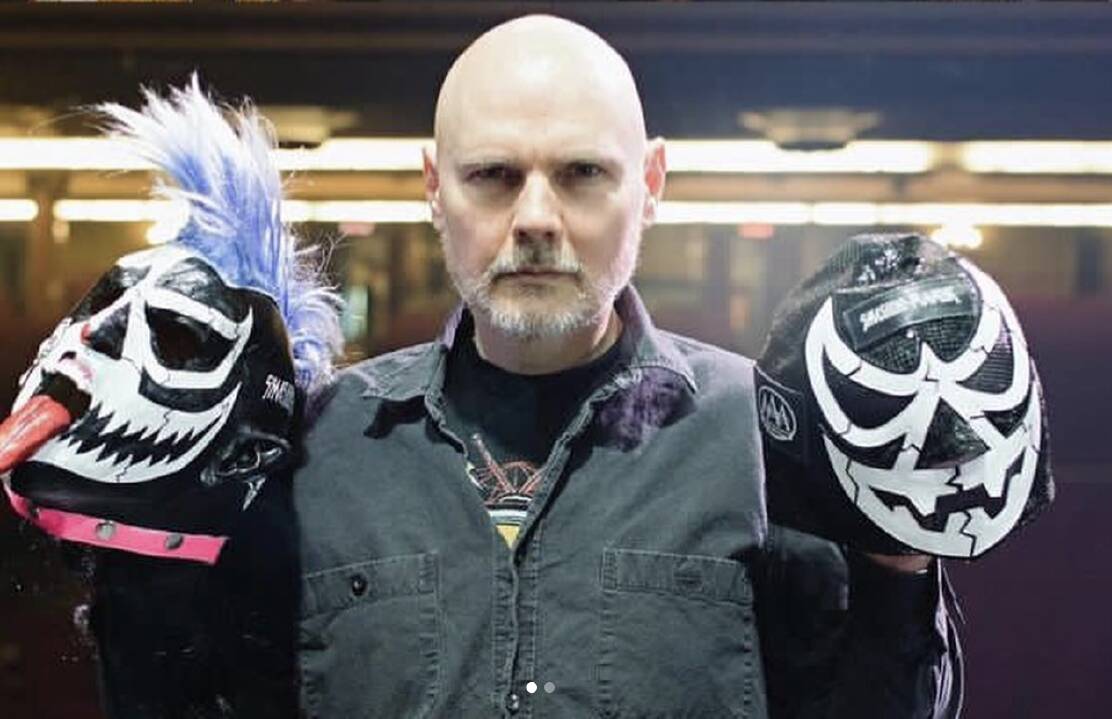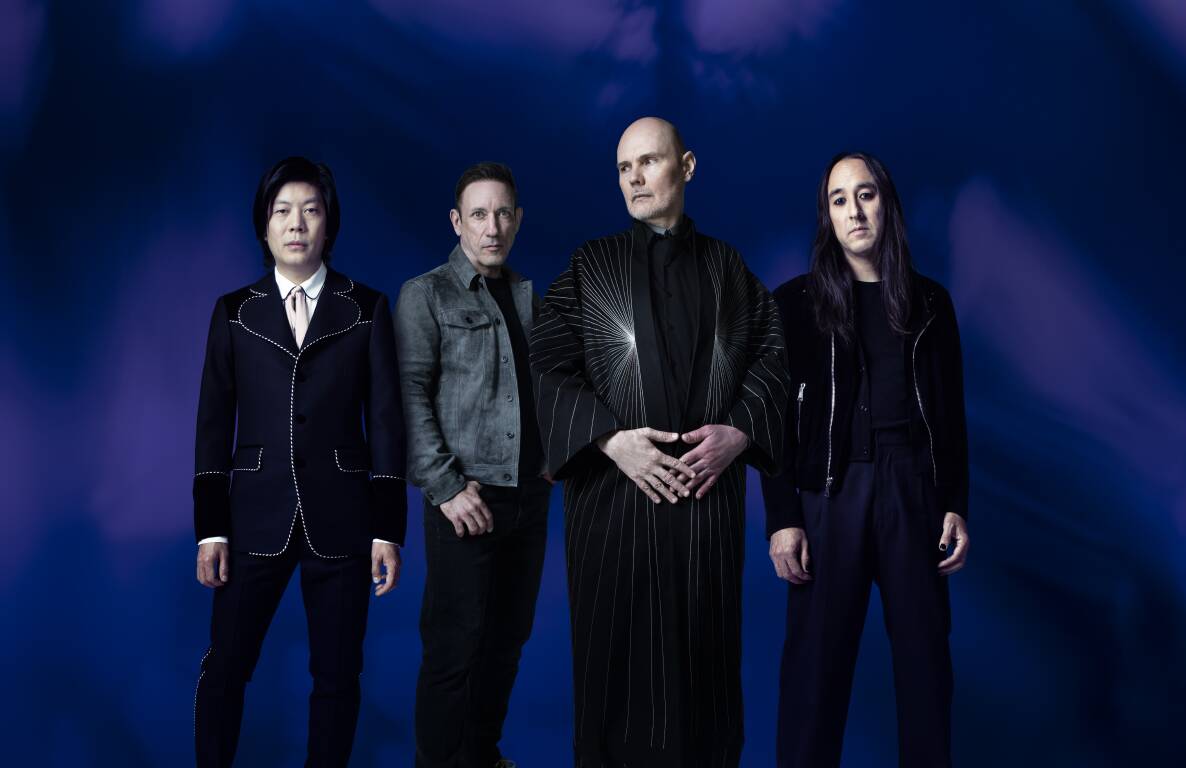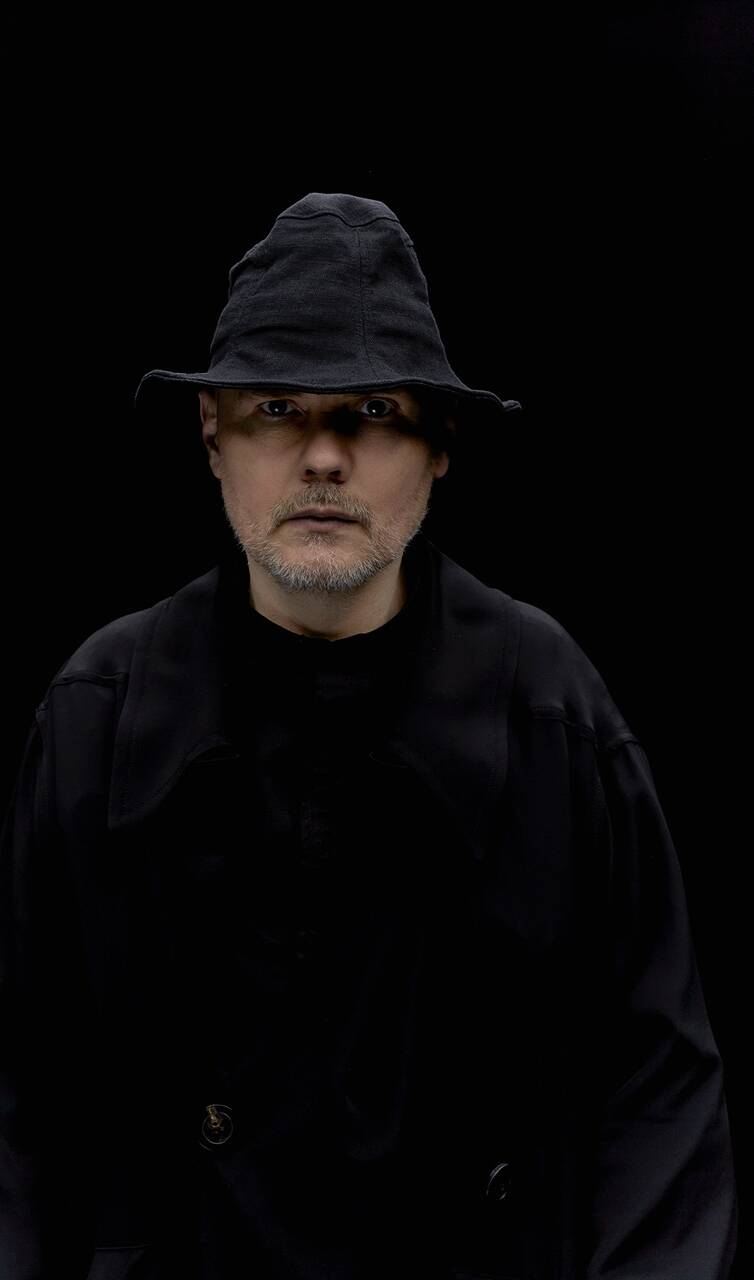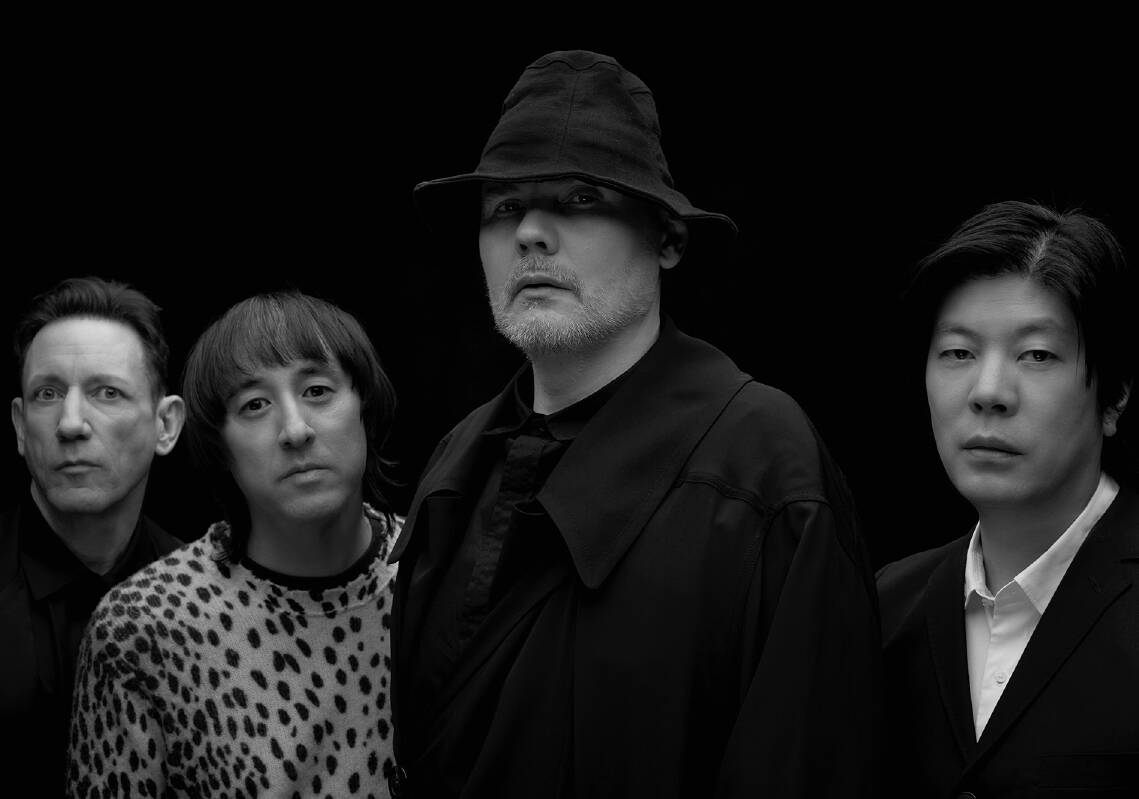
When asked how much rehearsal his National Wrestling Alliance stars will have with their Aussie opponents ahead of his arena rock and pro wrestling tour, Smashing Pumpkins frontman Billy Corgan offers a musical analogy.
"Wrestlers are trained, like a jazz musician, to improvise with anybody," the songwriter and impresario says. "You can take five wrestlers and say, 'This is what we're going to do', then put them in a room and they will talk about it. Then they will go out in the ring, without ever having touched one another, and do a 10-minute match and execute. It's amazing."
The World is a Vampire tour, the title of which is the iconic opening line from the Smashing Pumpkins' anthem Bullet With Butterfly Wings, combines the two professional passions central to Corgan's life - music and pro wrestling.
The Smashing Pumpkins - Corgan, guitarist James Iha, drummer Jimmy Chamberlin and guitarist Jeff Schroeder - will be joined by fellow travellers Jane's Addiction and Aussie upstarts Amyl and the Sniffers, RedHook and Battlesnake.
But it's not just stadium rock on the menu.

Corgan will bring stars from the National Wrestling Alliance, the historic 1948-founded promotion he purchased in 2017, for exhibition matches against invited wrestlers from the Wrestling Alliance of Australia.
The World is a Vampire tour has already visited Mexico, where the popularity of wrestling is trumped only by football.
The response was huge.
"My interest in the NWA is creating a mainstream product, meaning that the average person who doesn't like or understand wrestling would enjoy it, because I do think there's a market for that," he says.
The 56-year-old concedes that the interest he can bring to wrestling through his music is "inescapable".
In what will surely be a night of entertainment to remember, punters will be treated to exhibition matches between bands.
But there was a time when this concept wasn't feasible for Corgan.
As the rocker told podcaster Joe Rogan during their 2017 interview, he sensed that Pumpkins fans wouldn't be into pro-wrestling and vice versa.

But now, as Corgan says, The World is a Vampire experiment allows the rock star to bring wrestling and music together in an environment in which he is in control.
"Wrestlers don't like to be put in a situation where they feel lesser than [others] - nobody does," he says. "If I'm going to put the wrestlers in that situation, I need to make sure that they walk out of that [experience] feeling positive, well-treated and well-respected or that will blow back at me."
RISE TO THE TOP
Corgan is a native of Chicago, a city with a rich wrestling history that dates back to the 1880s.
As a four-year-old, the future alt-rock icon would sit around the television with his great-grandmother, a wrestling devotee, and watch William Afflis, aka "Dick the Bruiser", ply his trade on his opponents' skulls.
After those heady days the popularity of professional wrestling ebbed and flowed, lulling throughout the middle of last century before a Hulk Hogan-led resurgence in the 1980s.
Now the mammoth World Wrestling Entertainment, known as the WWE, generates over a billion dollars in revenue each year.
The company, valued at $9.3 billion, was this month purchased by Endeavour, owners of the Ultimate Fighting Championship, in a merger that will bring the disciplines of pro-wrestling and MMA under one gargantuan umbrella.
While there is competition between companies to grow market share and reach new demographics, Corgan says that behind the scenes there's a sense that the rising tide lifts all boats.
"It's a bit like punk rock back in the day," Corgan says, "in the sense that people in wrestling feel marginalised by American culture, so there's a camaraderie, even if people work for different companies. That's not to say it's not competitive, but there's a fraternity aspect to it."
Corgan believes the WWE and UFC merger will further elevate the profile of pro-wrestling.
"It really is going to accelerate the market, because now there will be innumerable opportunities," Corgan says.
"As Vince McMahon (WWE promoter and executive chairman) has proven over time, wrestling is a widely undervalued entertainment product. In America, back 50 or 60 years, it's always been treated as low brow. As if it's only what people in trailer parks are into. But it's big, big business. You have mainstream crossover celebrities and MMA stars. Bad Bunny, who's one of the biggest pop stars in the world, does stuff with the WWE. The Paul brothers, who are obviously huge social media influencers as well as professional boxers, they do stuff with the WWE. So I think people are starting to understand that it's just another entertainment product and it's losing that low-brow [perception]."
Corgan's friends couldn't understand why he'd want to buy the NWA.
"Everybody was like, 'What are you doing? Is this a lark?'" he says. "And I kept saying, 'No, believe it or not, it's a really good business opportunity. It's a difficult one, but it really is a business opportunity. Now, in this current climate, I don't seem as crazy as when I started in this [industry] about 10 years ago."
STEPPING UP TO THE PLATE
Corgan, a lifelong fan of the Major League Baseball team the Chicago Cubs, has never been afraid to take big swings as a songwriter.
Smashing Pumpkins' second record, 1993's Siamese Dream, entered the '90s youth zeitgeist and, along with Nirvana's iconic Nevermind, would ensure grunge and alt-rock's moment at the centre of the culture.
Corgan's response to selling 6 million copies of Siamese Dream, was to write and record a two-hour-plus sonic opus called Mellon Collie and the Infinite Sadness.
The frontman intended the 1995 double album to be "The Wall for Generation X".
To date it has sold in excess of 10 million copies and is heralded as a musical touchstone, spawning singles like Bullet With Butterfly Wings, 1979 and Tonight, Tonight.
But Corgan's ambition has only grown over time.
Almost 30 years later, The Smashing Pumpkins have released a 33-track, 138-minute rock opera called Atum (pronounced "Autumn").
While there is a pervading perception that "the album is dead" due to our modern inclination to listen to playlists over full albums, Corgan has never traded in the trends and tastes of a given time.
"Across the spectrum we're seeing radical shifts, whether it's TV viewing, album listening, watching movies - how people consume those things," Corgan says. "I think if you were to say something like, '... the album is dead', there's a lot of evidence for that. We're long past Sgt Peppers, where people sat in a circle, smoked weed, listened to the whole record and analysed the lyrics. I just think we're in a different time."
But Corgan believes that appealing to the appetites of a particular era is a fool's errand.

"I'm of the camp where you shouldn't let the culture dictate what you're interested in," the songwriter says. "There's a point where whatever you feel you need to express, you should just do it. And there's plenty of evidence to suggest that over time, things that have substance - it's less about whether it mattered at the time it came out.
"I've made albums that were considered complete, utter failures at the time, Adore [the 1998 follow-up to Mellon Collie] being one of them. It's the complete opposite experience now - people talk about it with great reverence and respect. At the time I was pilloried and told I was an idiot, and I should have made Mellon Collie II.
"When you've had those experiences, you're less attuned to whether something's trendy. [Smashing Pumpkins] were never really trendy, we were always against the grain. When everyone was playing three-minute pop songs, we were playing seven-minute jams with solos - it's just the way we were. Contrarian, I believe, is the word."
SHOOTING FOR THE STARS
Atum tells a humanist sci-fi narrative in which a former rockstar named Shiny is exiled by a totalitarian regime to live alone aboard an orbiting spaceship. When a devoted fan finds his location and learns that Shiny, tired of his existence, intends to have his spaceship auto-pilot into the sun, she sends out a distress call that is stumbled upon by a hacker group.
Thus unfolds an action-packed and richly cinematic story.
The signature moves of the Pumpkins' sound are present - pop sensibilities and heavy guitars ride shotgun on Chamberlin's thunderous drumming, gilded by futuristic keyboards.
And, despite its sonic twists and turns, it's the presence of Corgan's vocals that give every song its immediacy, that androgynous balance of ferocity and fragility.
Atum reminds you that it's the distinctive quality of his vocals that make a Pumpkins song, no matter the musical direction.
When asked if having such an instantly recognisable voice affords him more creative freedom, the songwriter offers a poignant recollection.
"My daddy, who's passed away now, I would lament to him at different times about how people perceived my different musical endeavours," Corgan says. "And he would just laugh and say, 'As long as your voice is on there, it's a Pumpkins song.' That was his advice. When you asked me that, it took me back to what he would say."
Now, for Corgan, the only relevant perception of his music is his own.
"With everything - the sound of the band, the songs I write, the way I produce the music, the sound of my voice, the way I play guitar, I have my own impressions of those things," he says.
"I've never been one of those [songwriters] where people are innately attracted to everything I do, or even most of what I do. So I don't really think about it anymore. If someone's told you something so many times, positive and negative, there comes a point where you just don't hear it anymore. Then it just becomes about how you feel."







